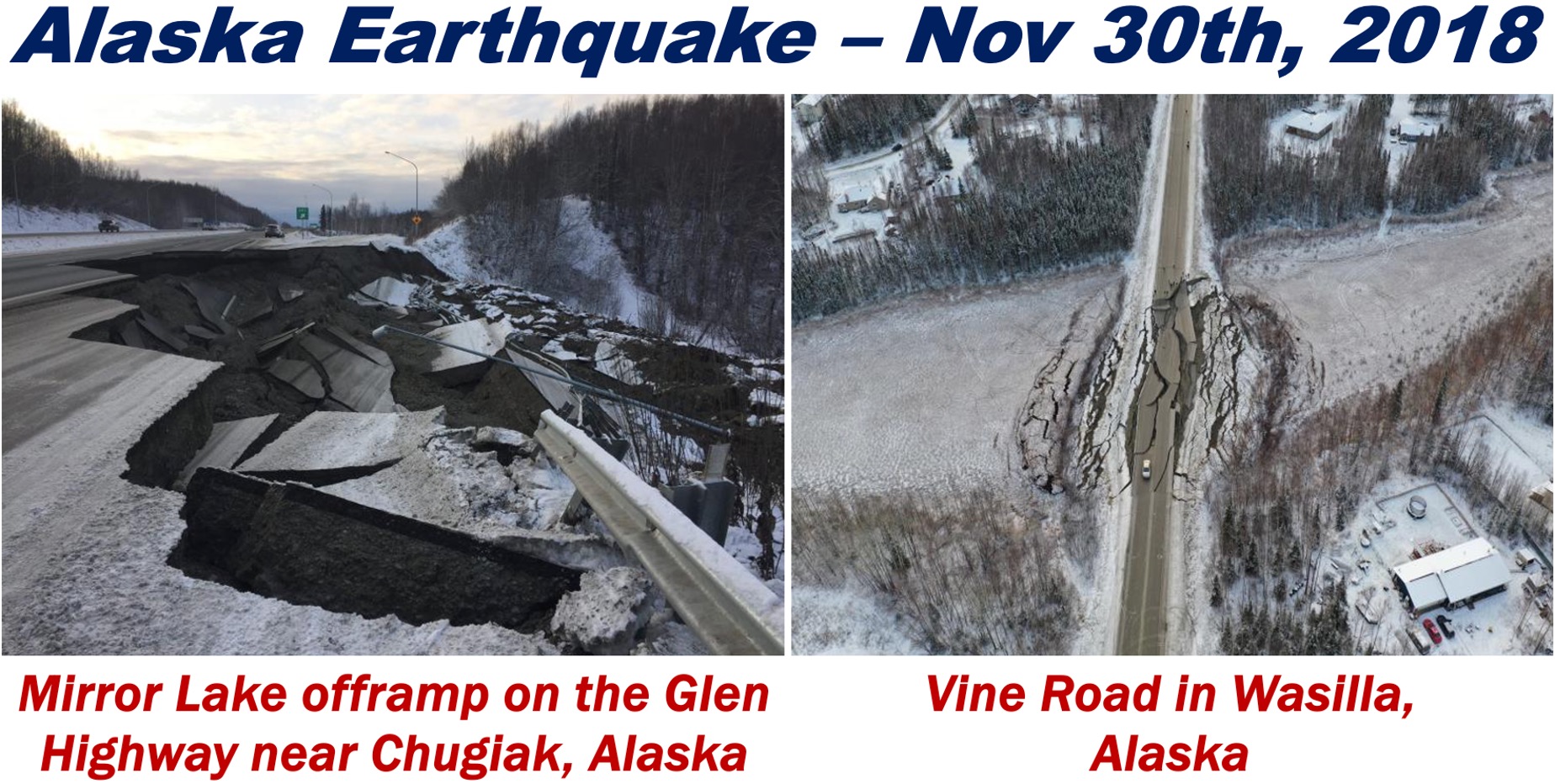Scientists at Ludwig Maximilian University of Munich (LMU Munich) and the University of Alaska Fairbanks (UAF) say that an AI model could notify us several days or even months in advance of a major earthquake. The AI identifies low-level tectonic unrest over large areas.
Two Major Earthquakes Analyzed
The two researchers, study leader Prof. Társilo Girona of the UAF Geophysical Institute and Dr. Kyriaki Drymoni, a geophysicist and data scientist at the Department of Earth and Environmental Sciences at LMU Munich, analyzed two major earthquakes in Alaska and California.
They wrote about their earthquake prediction method, which is based on *machine learning, in the prestigious journal Nature Communications (citation below).
* Machine learning is an AI technique that enables computers and systems to learn from experience without human intervention.
Girona said:
“Our paper demonstrates that advanced statistical techniques, particularly machine learning, have the potential to identify precursors to large-magnitude earthquakes by analyzing datasets derived from earthquake catalogs.”
They Created an Algorithm
Girona and Drymoni wrote a computer algorithm to search data for abnormal seismic activity. The algorithm focused on two powerful earthquakes:
- the 2019 Ridgecrest, California, earthquakes of July 4th and 5th with magnitudes of 6.4 to 7.1.
- the 2018 Anchorage earthquake, with a magnitude 7.1.
They found that in the three months leading up to both earthquakes, there was an unusual increase in low-magnitude seismic activity. This abnormal activity covered approximately 15% to 25% of the regions in Southcentral Alaska and Southern California.

Images courtesy of Alaska Department of Transportation and Public Facilities
Their study reveals that seismic activity with magnitudes below 1.5 typically indicates the onset of unrest before major earthquakes.
The Anchorage earthquake struck on November 30, 2018, at 8:29 a.m., with its epicenter about 10.5 miles north of the city. The quake caused significant damage to roads, highways, and several buildings.
Using their data-trained program, the researchers discovered that about three months before the Anchorage earthquake, the probability of a major earthquake occurring within 30 days surged to around 80%. This probability rose further to approximately 85% just days before the event. A similar pattern was observed for the Ridgecrest earthquake sequence, with elevated probabilities starting about 40 days before the quakes began.
Increase In Pore Fluid Pressure
Girona and Drymoni suggest that the low-magnitude precursor activity was caused by a marked increase in pore fluid pressure within a fault.
Pore fluid pressure refers to the pressure exerted by fluids within the pores of a rock. When this pressure becomes high enough, it can lead to fault slip by overcoming the frictional resistance between the blocks of rock on either side of the fault.
Drymoni said:
“Increased pore fluid pressure in faults that lead to major earthquakes changes the faults’ mechanical properties, which in turn leads to uneven variations in the regional stress field.”
“We propose that these uneven variations … control the abnormal, precursory low-magnitude seismicity.”
Machine Learning’s Impact on Earthquake Research
Girona explained that machine learning is having a significant and positive impact on earthquake research.
Girona said:
“Modern seismic networks produce enormous datasets that, when properly analyzed, can offer valuable insights into the precursors of seismic events. This is where advancements in machine learning and high-performance computing can play a transformative role, enabling researchers to identify meaningful patterns that could signal an impending earthquake.”
Their algorithm will be tested in near-real-time situations to identify and resolve potential teething problems in earthquake forecasting. They caution that the method should not be applied in new regions without first training it with that area’s historical seismic data.
Potential Challenges in Predicting Earthquakes
Girona said:
“Accurate forecasting has the potential to save lives and reduce economic losses by providing early warnings that allow for timely evacuations and preparation. However, the uncertainty inherent in earthquake forecasting also raises significant ethical and practical questions.”
“False alarms can lead to unnecessary panic, economic disruption, and a loss of public trust, while missed predictions can have catastrophic consequences.”
Citation
Girona, T., Drymoni, K. Abnormal low-magnitude seismicity preceding large-magnitude earthquakes. Nat Commun 15, 7429 (2024). https://doi.org/10.1038/s41467-024-51596-z.
